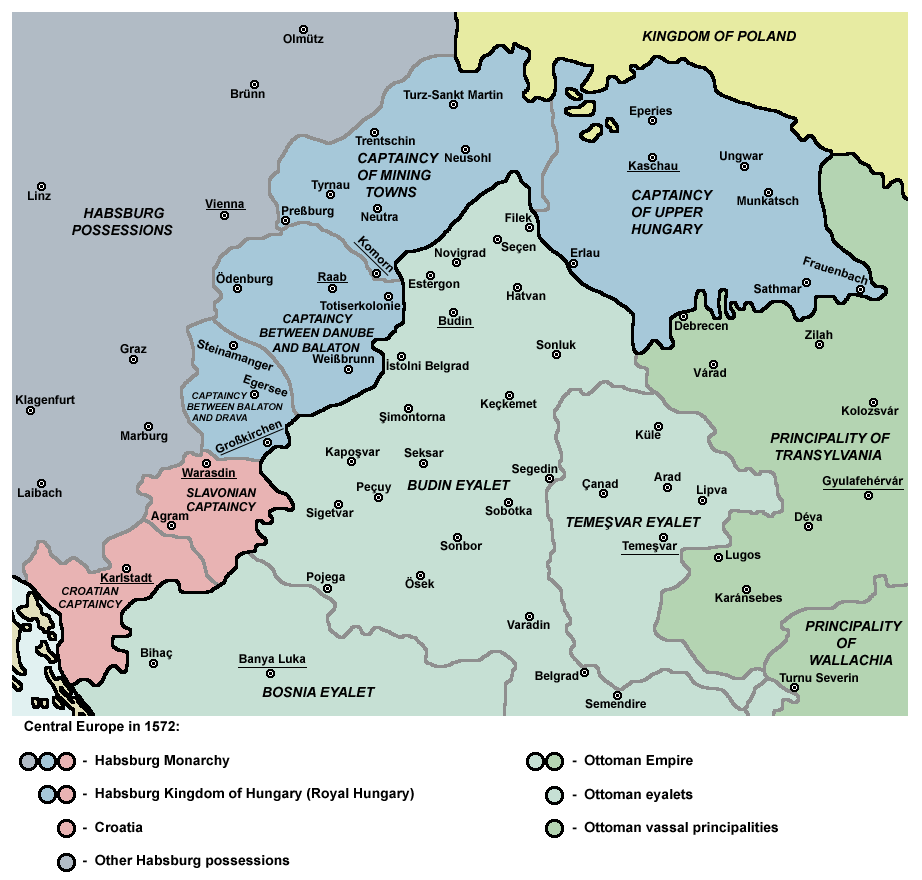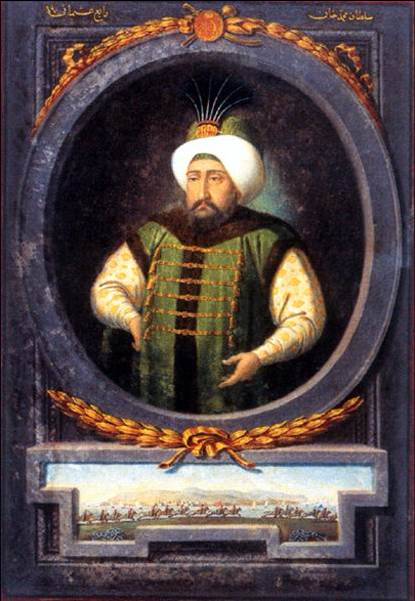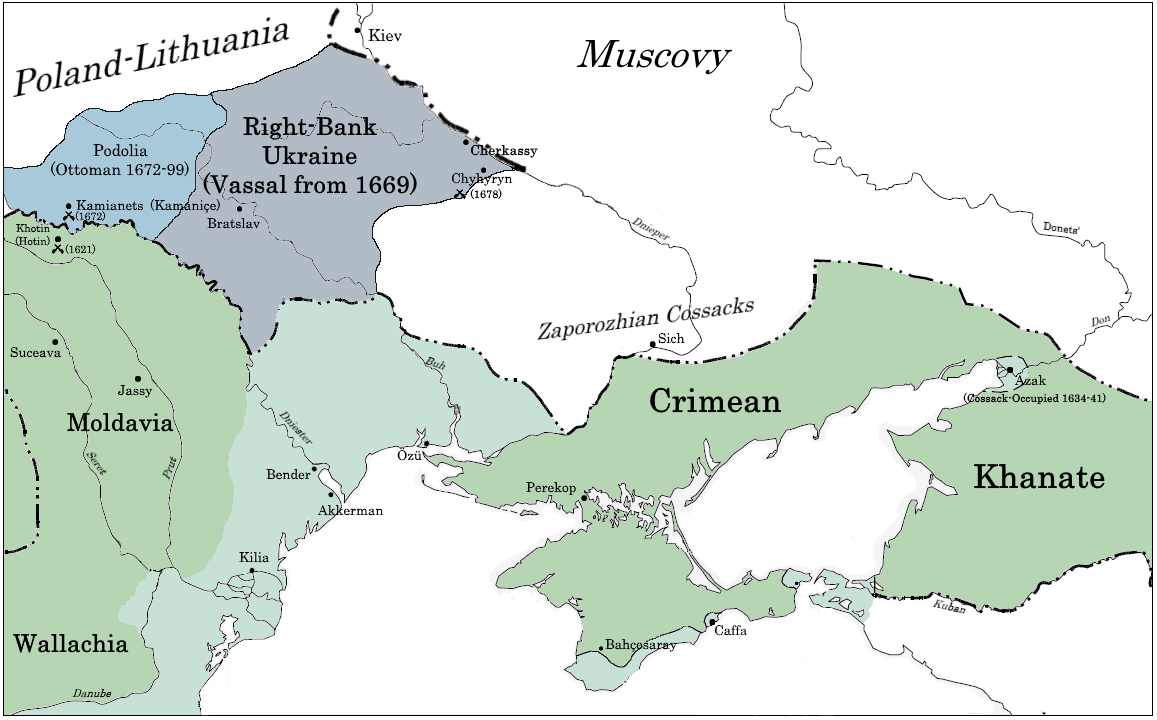|
Köprülü Era
The Köprülü era () (c. 1656–1703) was a period in which the Ottoman Empire's politics were frequently dominated by a series of grand viziers from the Köprülü family. The Köprülü era is sometimes more narrowly defined as the period from 1656 to 1683, as it was during those years that members of the family held the office of grand vizier uninterruptedly, while for the remainder of the period they occupied it only sporadically. The Köprülüs were generally skilled administrators and are credited with reviving the empire's fortunes after a period of military defeat and economic instability. Numerous reforms were instituted under their rule, which enabled the empire to resolve its budget crisis and stamp out factional conflict in the empire. Köprülü Mehmed Pasha The Köprülü rise to power was precipitated by a political crisis resulting from the government's financial struggles combined with a pressing need to break the Venetian blockade of the Dardanelles in the ... [...More Info...] [...Related Items...] OR: [Wikipedia] [Google] [Baidu] |
Cretan War (1645-1669) , a battle of World War II
{{disambiguation ...
Cretan War may refer to multiple wars involving the island of Crete, including: *Cretan War (205–200 BC), a war between King Philip V of Macedon and Rhodes *Cretan War (1645–1669), a war between the Republic of Venice and the Ottoman Empire See also *Cretan Revolt (other), various uprisings on Crete *Battle of Crete The Battle of Crete (, ), codenamed Operation Mercury (), was a major Axis Powers, Axis Airborne forces, airborne and amphibious assault, amphibious operation during World War II to capture the island of Crete. It began on the morning of 20 May ... [...More Info...] [...Related Items...] OR: [Wikipedia] [Google] [Baidu] |
Battle Of Zenta
The Battle of Zenta, also known as the Battle of Senta, took place on 11 September 1697 near Zenta, in the Kingdom of Hungary, then under Ottoman occupation (present-day Serbia). It was a decisive engagement of the Great Turkish War, fought between the forces of the Ottoman Empire and the Holy League. The battle resulted in a significant Ottoman defeat against a numerically inferior Habsburg force acting on behalf of Leopold I, Holy Roman Emperor. In 1697, the Ottoman Empire launched a renewed campaign to reclaim Hungary, with Sultan Mustafa II personally leading the invasion force. While the Ottoman army was in the process of crossing the Tisza River near Zenta, it was engaged in a surprise attack by Habsburg Imperial forces commanded by Prince Eugene of Savoy. Exploiting the Ottomans’ vulnerable position mid-crossing, the Habsburg army inflicted heavy casualties, including the death of the Grand Vizier, while dispersing the remaining Ottoman troops. The victors also c ... [...More Info...] [...Related Items...] OR: [Wikipedia] [Google] [Baidu] |
Siege Of Belgrade (1690)
The siege of Belgrade in 1690 was the fifth siege of that city, taking place during the Great Turkish War. Belgrade had been conquered by the Austrians under the elector of Bavaria, Maximilian II Emanuel, on September 6, 1688, after a five-week siege. Only 20 days later, King Louis XIV of France invaded the Rhineland, starting the Nine Years' War. This invasion made the Emperor stop all offensives in the Balkans and redirect the bulk of his army in the East towards the Rhine. This diversion allowed the Ottomans under Grand vizier Köprülü Fazıl Mustafa Pasha to regroup their army and retake the initiative. In 1690, the Ottomans recaptured Niš and by October 2 they had reached Belgrade. The siege lasted for only six days, as the Austrians were forced to surrender when their main powder magazine was hit by a Turkish shell and exploded. Belgrade was then captured by the Ottomans. In 1693, Habsburg forces attempted to capture the city again, but failed. The Turks would hold t ... [...More Info...] [...Related Items...] OR: [Wikipedia] [Google] [Baidu] |
Ottoman Hungary
Ottoman Hungary () encompassed the parts of the Kingdom of Hungary which were under the rule of the Ottoman Empire from the occupation of Buda in 1541 until the Treaty of Karlowitz in 1699. The territory was incorporated into the empire, under the name ''Macaristan.'' For most of its duration, Ottoman Hungary covered Southern Transdanubia and almost the entire region of the Great Hungarian Plain. Ottoman Hungary was divided for administrative purposes into Eyalets (provinces), which were further divided into Sanjaks. Ownership of much of the land was distributed to Ottoman soldiers and officials with the remaining territory being retained by the Ottoman state. As a border territory, much of Ottoman Hungary was heavily fortified with troop garrisons. Remaining economically under-developed, it became a drain on Ottoman resources. During the centuries long three-way Hungarian–Habsburg–Ottoman wars the Hungarian population was highly decimated. Although there was some immigr ... [...More Info...] [...Related Items...] OR: [Wikipedia] [Google] [Baidu] |
Tsardom Of Russia
The Tsardom of Russia, also known as the Tsardom of Moscow, was the centralized Russian state from the assumption of the title of tsar by Ivan the Terrible, Ivan IV in 1547 until the foundation of the Russian Empire by Peter the Great in 1721. From 1550 to 1700, Russia grew by an average of per year. The period includes the Time of Troubles, upheavals of the transition from the Rurik Dynasty, Rurik to the House of Romanov, Romanov dynasties, wars with the Polish–Lithuanian Commonwealth, Swedish Empire, Sweden, and the Ottoman Empire, and the Russian conquest of Siberia, to the reign of Peter the Great, who took power in 1689 and transformed the tsardom into an empire. During the Great Northern War, he implemented government reform of Peter I, substantial reforms and proclaimed the Russian Empire after Treaty of Nystad, victory over Sweden in 1721. Name While the oldest Endonym and exonym, endonyms of the Grand Principality of Moscow used in its documents were "Rus'" () and ... [...More Info...] [...Related Items...] OR: [Wikipedia] [Google] [Baidu] |
Holy Roman Empire
The Holy Roman Empire, also known as the Holy Roman Empire of the German Nation after 1512, was a polity in Central and Western Europe, usually headed by the Holy Roman Emperor. It developed in the Early Middle Ages, and lasted for a millennium until its Dissolution of the Holy Roman Empire, dissolution in 1806 during the Napoleonic Wars. For most of its history the Empire comprised the entirety of the modern countries of Germany, Czechia, Austria, the Netherlands, Belgium, Switzerland, Slovenia, and Luxembourg, most of north-central Italy, and large parts of modern-day east France and west Poland. On 25 December 800, Pope Leo III crowned the Frankish king Charlemagne Roman emperor, reviving the title more than three centuries after the fall of the Western Roman Empire in 476. The title lapsed in 924, but was revived in 962 when Otto I, OttoI was crowned emperor by Pope John XII, as Charlemagne's and the Carolingian Empire's successor. From 962 until the 12th century, the empire ... [...More Info...] [...Related Items...] OR: [Wikipedia] [Google] [Baidu] |
Köprülü Fazıl Mustafa Pasha
Köprülü may refer to: People * Köprülü family (Kypriljotet), an Ottoman noble family of Albanian origin ** Köprülü era (1656–1703), the period in which the Ottoman Empire's politics were set by the Grand Viziers, mainly the Köprülü family *** Köprülü Mehmed Pasha (1575–1661), Ottoman statesman, founder of the Köprülü family *** Köprülü Fazıl Ahmed Pasha Köprülü may refer to: People * Köprülü family (Kypriljotet), an Ottoman noble family of Albanian origin ** Köprülü era (1656–1703), the period in which the Ottoman Empire's politics were set by the Grand Viziers, mainly the Köprülü fa ... (1635–1676), Ottoman statesman *** Köprülü Fazıl Mustafa Pasha (1637–1691), Ottoman statesman *** Amcazade Köprülü Hüseyin Pasha (1644–1702), Ottoman statesman *** Köprülü Numan Pasha (died 1719), Ottoman statesman *** Köprülü Abdullah Pasha (died 1735), Ottoman general ** Mehmet Fuat Köprülü (1890–1966), Turkish politician and hi ... [...More Info...] [...Related Items...] OR: [Wikipedia] [Google] [Baidu] |
Sultan Mehmed IV
Mehmed IV (; ; 2 January 1642 – 6 January 1693), nicknamed as Mehmed the Hunter (), was the sultan of the Ottoman Empire from 1648 to 1687. He came to the throne at the age of six after his father was overthrown in a coup. Mehmed went on to become the second-longest-reigning sultan in Ottoman history after Suleiman the Magnificent. While the initial and final years of his reign were characterized by military defeat and political instability, during his middle years he oversaw the revival of the empire's fortunes associated with the Köprülü era. Mehmed IV was known by contemporaries as a particularly pious ruler, and was referred to as gazi, or "holy warrior" for his role in the many conquests carried out during his long reign. Under Mehmed IV's reign, the empire reached the height of its territorial expansion in Europe. From a young age he developed a keen interest in hunting, for which he is known as ''avcı'' (translated as "the Hunter"). In 1687, Mehmed was overthrown by ... [...More Info...] [...Related Items...] OR: [Wikipedia] [Google] [Baidu] |
Holy League (1684)
The Holy League () was a coalition of Christian European nations formed during the Great Turkish War. Born out of the Treaty of Warsaw, it was founded as a means to prevent further expansion of the Ottoman Empire into Europe. This consolidation of a large portion of Europe's military might led to unprecedented military successes, with large areas of previously ceded land recovered in Morea, Dalmatia and Danubia in what has been dubbed a "14th crusade". The formation of the League has been recognised as a turning point in the history of the Ottoman Empire. By forcing military defeats and territorial losses onto the Empire, the League shifted the balance of power away from the Ottomans, leading to a diminished Ottoman presence in Europe. The League was dissolved after the Treaty of Karlowitz in 1699. Background and origins Ottoman imperialism The Ottoman Empire had annexed much of Eastern Europe under the control of grand vizier Mehmed IV through multiple successfu ... [...More Info...] [...Related Items...] OR: [Wikipedia] [Google] [Baidu] |
Merzifonlu Kara Mustafa Pasha
Kara Mustafa Pasha (; ; "Mustafa Pasha the Courageous"; 1634/1635 – 25 December 1683) was an Ottoman nobleman, military figure and Grand Vizier, who was a central character in the Ottoman Empire's last attempts at expansion into both Central and Eastern Europe. Early life and career Kara Mustafa Pasha was of Turkish origin. However, he was brought up in the Köprülü family, of Albanian origin. He was born in the village of Mirince/Marınca near Merzifon (now called Karamustafapaşa after him), the son of a ''sipahi'', cavalry man. His father is said to have served under Köprülü Mehmed Pasha. Possibly as a way to increase his possibilities to start an administrative career, he was introduced into the Köprülü household, where he was educated by Köprülü Mehmed Pasha, and married into the Köprülü family.''The Siege of Vienna'', John Stoye, p. 18. How he entered the family and the details of his marriage are unclear. Within the household's inner service (''ende ... [...More Info...] [...Related Items...] OR: [Wikipedia] [Google] [Baidu] |




